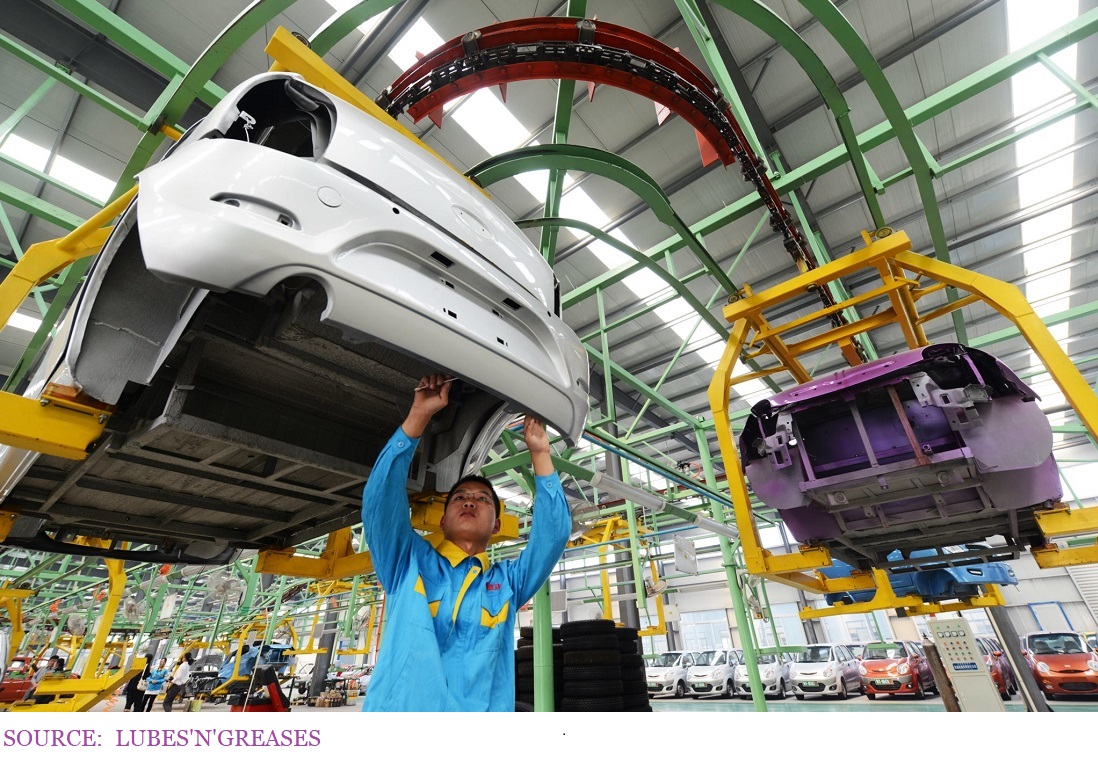Industrial Oil Suppliers Well-suited for EVs
SINGAPORE – Asia’s electric vehicles growth will create new market opportunities for marketers of industrial lubricants, not just automotive lubes, a consultant said here last month.
“We should change our perspective on EVs. EV is not [just] automotive anymore, it is an industrial machine moving at high power and speed,” said Shailendra V. Gokhale, managing partner of Rosefield DAA International Consultancy, a specialized lubricant consulting company based in India.
Factory fill and service fill of EVs will no longer be a business only for automotive lubricants blenders. “Any fluids required for [factory fill] and [service fill] of EVs can be manufactured by industrial lubricant manufacturers,” he told Lube Report.
In 2015, the automotive sector’s share of total global lubricant demand was more than half or 53 percent. “Lubricant demand by 2030 will undergo changes due to the internal combustion engine to EV transition,” Gokhale told attendees at the Asian Industrial Lubricants Conference jointly organized by ICIS and the European Lubricating Grease Institute. He predicted that EVs will account for 15 to 25 percent of the percent of global vehicle parc by then.
Hybrid electric vehicles will likely have a larger share of the EV market in the short term, and battery electric vehicles in the long term. But “it is still too early to calculate the lubricant mix by 2030 due to the lack of clarity of government policies and [how the] journey of hybrid electric vehicles versus EV versus more efficient ICEs [will take] over the next decade,” he added.
However, what we do know is “EVs need high-performance fluids and greases like gear oils to lubricate differentials, chassis and wheels, coolants for the battery,” he added. Differentials allow wheels to rotate at different speeds while cornering.
Some of the challenges of lubricating EVs compared to conventional vehicles are: higher operating temperatures for axle lubricants; a general need for higher viscosity indices, leading to greater need for synthetic base fluids; a need to protect against copper corrosion.
The greases used in EVs require improved energy conservation, thermal performance and compatibility with electrical currents compared to those used in vehicles powered only by ICEs, but greases demonstrating such performance are already in use in other applications. For example, if the current industrial electric motor greases are considered a starting point for automotive applications, the voltage issue has already been addressed. Then the formulating challenge is around the different mechanical environment of the e-motor. Industrial electric motor greases are often based on polyurea or lithium complex thickeners, due to their higher mechanical stability, which ensures the grease stays in the bearings and does not migrate to the windings.
“Other challenges in EVs different from industrial applications also need to be addressed,” he said. For example, electric motors for automotive applications will operate at higher rotational speeds than most industrial applications, leading to increased shear and higher temperatures in the bearings. The viscosity of the base fluid will have to be low to reduce energy losses due to friction or drag in all parts of the drivetrain, but high enough to maintain an oil film under all anticipated operating conditions.
“All these factors drive formulators towards synthetic and lower-viscosity base fluids. Stop-start operation is likely to be more prevalent in EVs than in most industrial applications,” said Gokhale.
Timing is important too. “It’s critical to know that Asia is going to be a growth engine, and the ICE-to-EV transition will take a much longer time,” he added.
In terms of economic growth engine, “three Asian countries – China, India and Indonesia – will be in the top five in terms of gross domestic product by 2050, with increasing motorization and industrial activities in this region,” he said.
Currently, only 14 percent of total global population has adopted and uses motorized vehicles as a core part of economic and daily life, and that percentage is expected to grow to 23 percent by 2035. “Most of the growth will come from Asia, followed by the Middle East and Africa,” he said.
This means “demand for industrial lubricants for automotive manufacturing applications like hydraulic fluids, gear oils, soluble cutting oils, neat cutting oils and others will remain robust,” he said. However, engine oil demand will drop. Gokhale cited a forecast by consulting firm McKinsey & Co. that demand for automotive lubricants will fall from 17.4 million tons in 2020 to 15.9 million tons in 2035 while demand for industrial lubricants not related to transportation increases from 23.8 million tons in 2020 to 28.9 million tons in 2035.
Some other analysts predict automotive lube demand will continue rising through the middle of this century, though not as fast as it would without EVs.
Lubricant consumption by BEVs will jump from 1 percent in 2020 to 12 percent in 2030, and HEV and plug-in hybrid electric vehicle consumption will jump from 1 percent to 6 percent in the same period. “There will be a thin line between business-to-business and business-to-consumer for e-fluids, and industrial lubricant manufacturers can let business-to-consumer companies distribute their e-fluids. The challenges of automotive fluid for EVs are not new for industrial lubricant producers, who have solutions to overcome most of these challenges,” he concluded.
